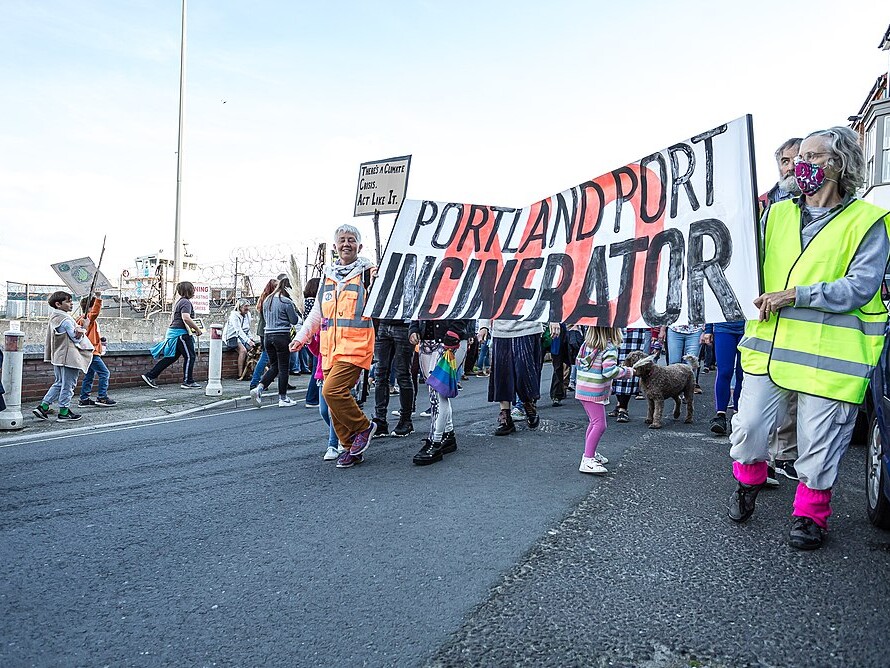Global Environmental Justice
Environmental Justice (EJ) is a framework for thinking about “the unequal distribution of social and environmental costs between different human groups, classes, ethnicities but also in relation to gender and age. EJ draws attention to the link between pollution, race and poverty and tackles socio-spatial distribution of “bads” (emissions, toxins) and “goods” (like green spaces and better services)” (EJAtlas)
Environmental justice should be viewed within a global context.
‘Global’ emphasises the globalised nature of environmental degradation and supply chains. Emphasis is given to the externalisation of costs, and consideration of where and how consumption in one location is dependent on a complex web of production activities, some of which may be the cause of conflicts in another.
Read the full report:

Definitions and explanations about key terms relevant to global environmental justice.
How does global environmental justice relate to the transition to a circular economy?
Explore relevant examples.
Where to learn more.
Key concepts
Environmental Conflicts
The unequal distribution of the benefits and costs of societal use of the biophysical environment generates social conflicts, arising at the points where different metabolic patterns collide. The main actors of such conflicts include indigenous communities, self-sufficient rural populations, and informal and marginalised workers.
The Environmental Justice Atlas is an essential database of environmental distribution conflicts.
The CE, in its mainstream formulation, is a potential new source of global environmental injustice.


Industrial Social Metabolism
Refers to the material and energy throughput of the global economy, including resources (energy and raw materials), and the associated sinks at which wastes find themselves (rivers and oceans, the atmosphere, the soil, etc.). Metabolism is needed to keep any society alive.
GDP growth is inextricably associated with a continuous and accelerated growth of industrial social metabolism: this increase has caused a highly unequal distribution of environmental costs across social groups and different areas of the world.
The CE, in its mainstream form, is still geared on a vision of prosperity that relies on continuous GDP growth. This is a paradox: on the one hand, this CE recognises the economy’s dependence on the material world; on the other, it can refuse to adequately address the material impacts of any growing economy.
Climate & Ecological Debt
It is important to recognise the unequal distribution of costs and benefits of economic growth between the global North and South, and the impact of historical colonisation.
Economic growth has been possible in the global North through the historical and continued plundering of resources, and the discharge of waste and other ecological damage onto colonised territories. This generates an ecological debt.
The unequal impact of the climate crisis worldwide is recognised, and has been highlighted by decolonial social movements since the early 1990s. Decolonial movements have demanded the reparation of ecological and climate debt from the Global North, aiming to remediate the legacy of colonialism and unequal ecological exchange.
CE needs to be reformulated as a response to ecological unsustainability and as a form of debt repayment via climate and ecological reparations.


Working Class Environmentalism
We can understand the working class as those in typically the lowest paying, highest risk jobs, typically occupying the bottom of the labour hierarchy, including physical activity performed in agriculture, industry or service. This work can be primary site of environmental injustice and conflict.
The concept of working-class environmentalism allows us to think about the environmental agency of workers who struggle to defend the environment and their labour conditions. It emphasises the diversity of actors involved in EJ movements across local and global divisions of labour.
Within working-class communities, for example, sexual and colonial divisions of labour make women and racialised people most exposed to environmental threats but also most active in environmental conflicts. Working class environmentalism can make visible the distinct forms of environmental agency and subjectivity carried by workers and working-class communities.
Restorative Justice
Rooted in indigenous practices, restorative justice is an approach to justice which prioritises repair to individuals and communities who have been harmed. Here, offenders are encouraged to take responsibility for their actions, understand the harm done, and act to rebuild and learn.
In the context of global environmental justice, restorative justice would consist of redressing environmental and social costs, for example decommissioning energy or industrial places, while conducting systematic environmental restoration of the site. It could form a legal tool to restore the damages of human activity and to redirect capital investments away from carbon-intensive activities.

Environmental Justice and Circular Economy
Justice concerns are largely absent from discussion of Circular Economy, with an emphasis instead given to economic indicators such as profit & economic growth.
The growth logic necessitates an ever expanding material basis, leading to expanding extraction and waste disposal frontiers. Even if circularity (efficiency) is increased under this mode, expansion, and the increase in demand of resources, still poses a risk of a possible increase in global environmental injustice.
CE can appear as a form of resolution of pre-existing environmental conflicts as presented by policy makers or in business-oriented projects. However, when imposed from above, from a top-down perspective, without working to understand the complex issues, and involve affected communities as meaningful stakeholders in the process, CE practices may reinforce existing environmental injustices.
The concept of environmental justice originates in the anti-toxic struggles of Black, Latino, and Native American communities in the U.S.A. Since the second half of the 1960s, racialised communities have been denouncing how toxic waste and hazardous activities tended to concentrate systematically in their neighbourhoods and territories and characterise their working environment.
Global aspects have been highlighted by tracing pollution chains of production and disposal from centres to peripheries of the global economy. This is seen in global waste chains, or waste-shifting towards peripheral territories within and outside of Europe. Such phenomena have been conceptualised in terms of environmental racism, toxic colonialism, and garbage imperialism.

Waste-Pickers in Rio de Janeiro: Top-Down vs Bottom-Up CE Practices
In 2010, the Brazilian National Policy on Waste created important changes in the legislation, including formal recognition of waste-pickers as workers; the obligation to include these workers in the municipal waste management plans; and the obligation to shut down all illegal dumpsites in Brazil.
Yet, the implementation of this top-down policy left many waste-pickers behind, either by restricting access to dumpsites (and recyclables), or by imposing the high costs of formalisation upon the workers themselves (e.g. health insurance). These impacts acted to marginalise and exclude many informal waste-pickers from the waste management plans.
The women-led movement “Reciclação”, founded in the Morro dos Prazeres favela of Rio de Janeiro, used collective action to encourage the participation of residents in the waste sorting and environmental preservation of the favela. Thanks to financial support from both the public and the private sector, the organisation achieved much higher rates of separation of recyclable materials than the rest of the city (71% vs 3%).
This case in which a women-led, bottom-up CE practice involving waste pickers and local cooperatives emerged in response to spatial injustice is an example of working-class environmentalism.
Case Studies

March Against Incineration – Portland, Dorset October 2021 created by Stephen and Helen Jones, reproduced through Creative Commons Attribution-Share Alike 2.0
Waste to Energy
Waste to Energy has been debated in the context of EJ since the 1970s. It is seen as a clear source of environmental injustice, reflecting the unequal distribution of environmental risks of waste disposal.
In Europe, Ireland’s Galway Safe Waste Alliance is an example of EJ adopted to resist the expansion of energy from waste, a practice that also the activists of the waste-struggle in Campania, Italy, opposed.
Failed CE Projects in China
Most official documents describe the success of CE projects in China, even though on the ground many initiatives have been reported as failures (Huang, 2020).
The Guiyu National Circular Economy Industrial Park in Guangdong is an emblematic case, as one of the official pilot projects of e-waste management implemented by the Chinese Government. The management plan supports the formalisation of e-waste recycling companies, both as a guiding principle and as a public policy. Yet the construction of this Industrial Park did not give sufficient thought to local demands, particularly neglecting the views of those working in the informal recycling sector, a problem of representational justice.
